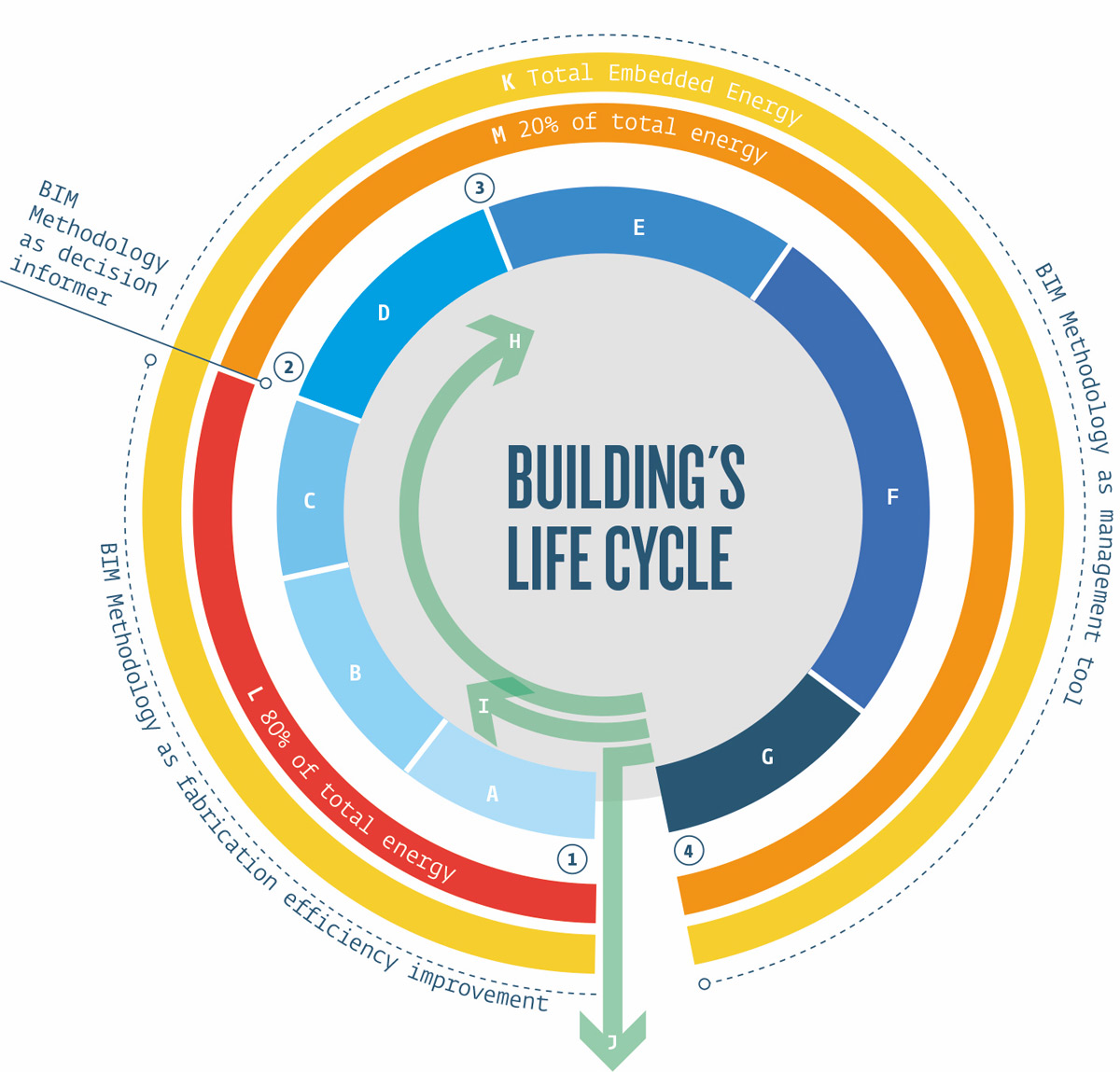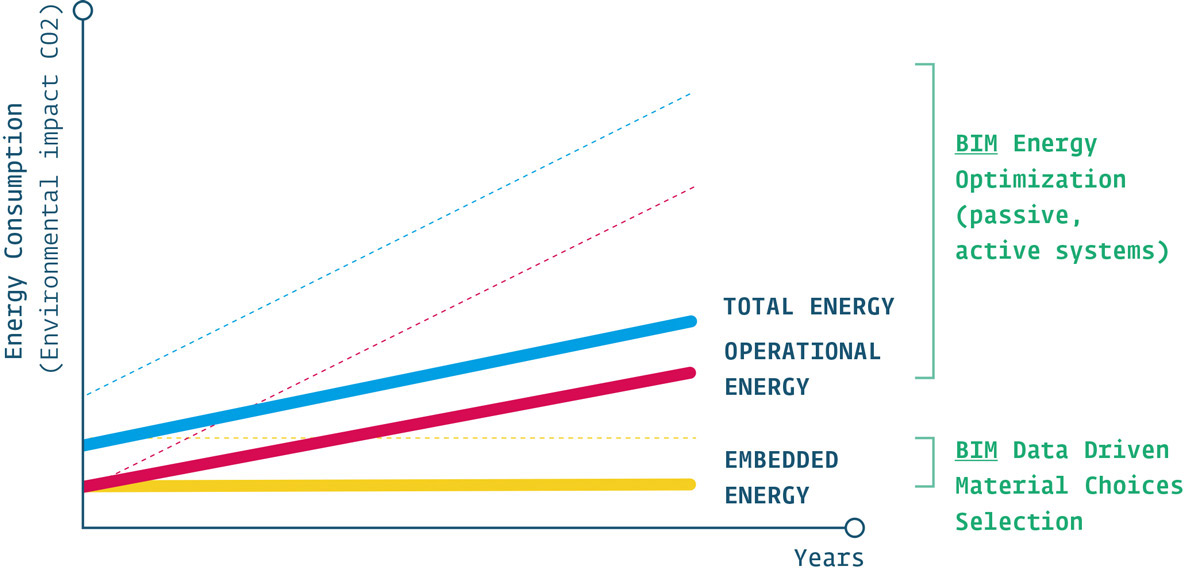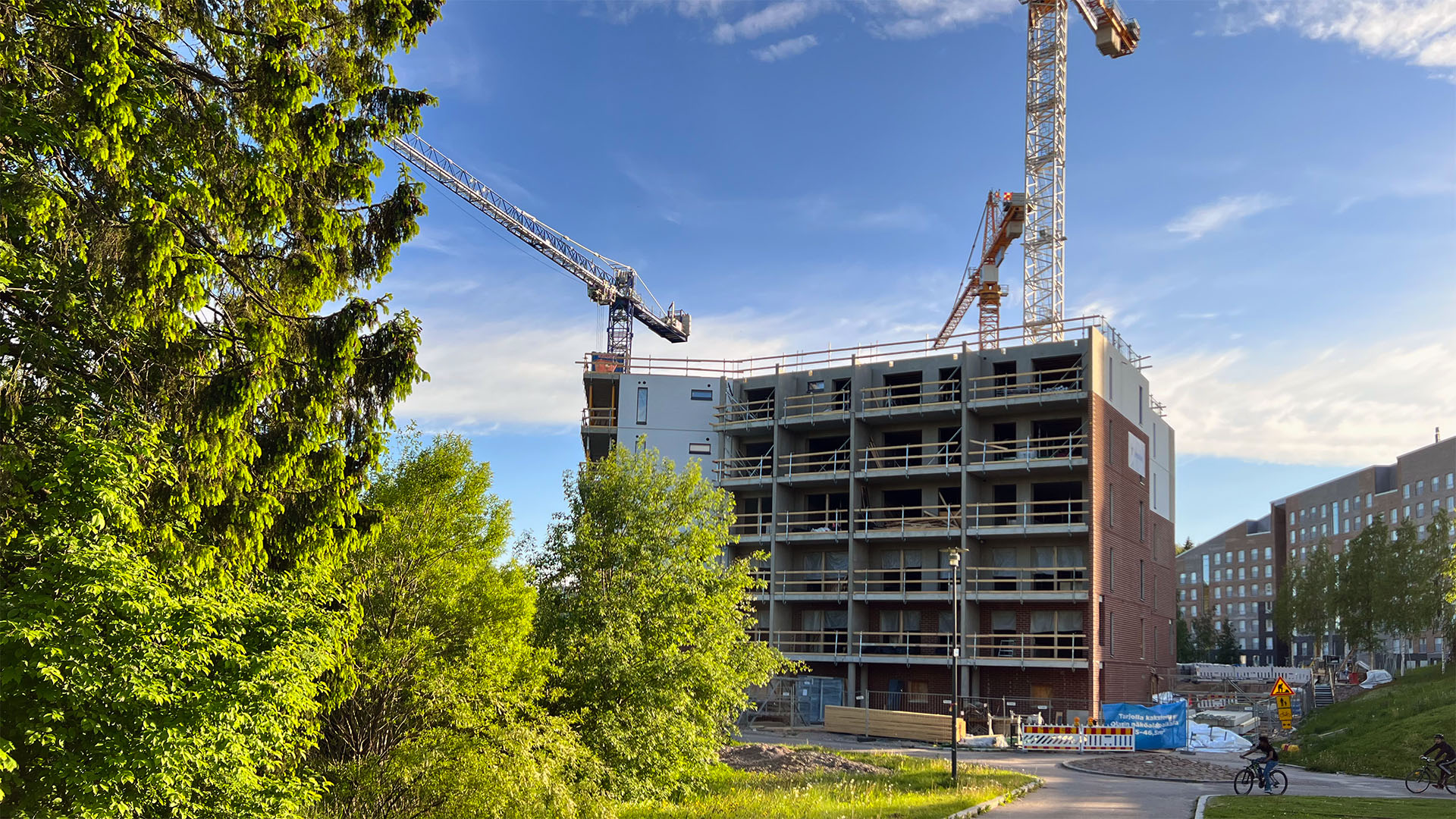The environmental impact of buildings is expected to increase as the world population continues to grow. Sustainability in construction becomes crucially essential for the future of the planet and its inhabitants. Considering the energy and material resources throughout a building’s life cycle is the key to controlling its environmental impact.
Following the Industry 4.0 principles regarding built environment sustainability, digital technologies enable conscious buildings. They, in turn, can create an ecosystem with a positive contribution to the human habitat by reducing its environmental footprint and contributing to its energy and material dimension.
To learn more about using BIM for environmentally sound construction, please refer to the article “Achieving Sustainability in Construction Through Digitally Informed Decisions” by the author as part of a Springer book Industry 4.0 for the Built Environment, edited by Marzia Bolpagni, Rui Gavina, and Diogo Rodrigo Ribeiro.
Analysis
The site and climate analysis are the first steps to inform future design decisions. Technological tools such as BIM software can add valid information for informed decision-making. It opens doors to less obvious solutions that consider factors such as sun exposure, the behavior of airflow, and shading elements. With the technology, the designer becomes profoundly aware of the potential and genesis of the site.
Finding the optimal solution to attain carbon neutrality is a complex task. Concepts such as nearly zero energy buildings (NZEB) point the way to the energy balance of construction and can contribute to lowering the CO2 emissions derived from operational needs. Nonetheless, the carbon footprint from materials is as significant as energy use.
The sum of the overall environmental impact of the building until it’s demolished can be measured in CO2, resulting in a chart like the one shown in Fig. 1. The embedded energy is the result of material selection and construction. In contrast, operational energy results from all the building’s systems needed through its lifespan.
Sustainability must be addressed as the overall emissions, bringing light to reducing material and energy environmental impact.

Life cycle
Life-cycle analysis is crucial to attaining the building’s, or rather, the built environment’s sustainability. You can’t assess the impact of the building on the environment, from the city to the simple structure level, without understanding the system’s complexity or all the phases of its life cycle.
This complex process uses databases and calculations that can be articulated and processed in the BIM model for further analysis according to the intended scope.
Articulating energy and materials is one of the critical points for the balance and efficiency of the building in its environment. One can apply life-cycle thinking during the design and decision-making phases and utilize BIM and design thinking processes to control the environmental impact of the building interactively.


Construction
One of the most significant challenges faced in the building process is the materialization of the project during construction. Industry 4.0 aims for a minimum margin of error in all operations by ensuring that the dimensions of sustainability are not compromised.
The renewal of material resources, the reintroduction of materials into the production and construction chain, and the direct reuse of material resources play a critical role in achieving the targets of Industry 4.0.
A BIM model can be optimized to inform a production line. Within the parameters and technological limits, the customization of solutions is no longer a waste of time and material.
Human habitat
Achieving sustainability in construction through digitally informed decisions represents the Industry 4.0 goal and is now the challenge.
Are buildings going to be able to “give back” energy? Or even purify the air that we breathe? Sustainability must incorporate all the technical solutions and be the cradle of ideas for the future.
Lowering material and energy embedded carbon and shifting our habitat paradigm to one that embraces an ecosystemic role provides the guidelines for a more human-centered future. Human-centered buildings with low-impact materials and almost zero energy can be data-driven and designed consciously.
Industry 4.0 contextualizes a situational framework where it will be possible to predict and simulate the material and energy dimensions for the life-cycle assessment at an early stage, as well as thoroughly control the production and construction systems to achieve new paradigms in AEC.


About the author


Pedro Santiago
Pedro is an architect and founder of PSPV Arquitectos associados Lda, professor and researcher at Fernando Pessoa University, in the themes of project and sustainable construction, ecology, biomimetics, natural environment, design and digital project with parametric and generative processes.
View the original article and our Inspiration here


Leave a Reply